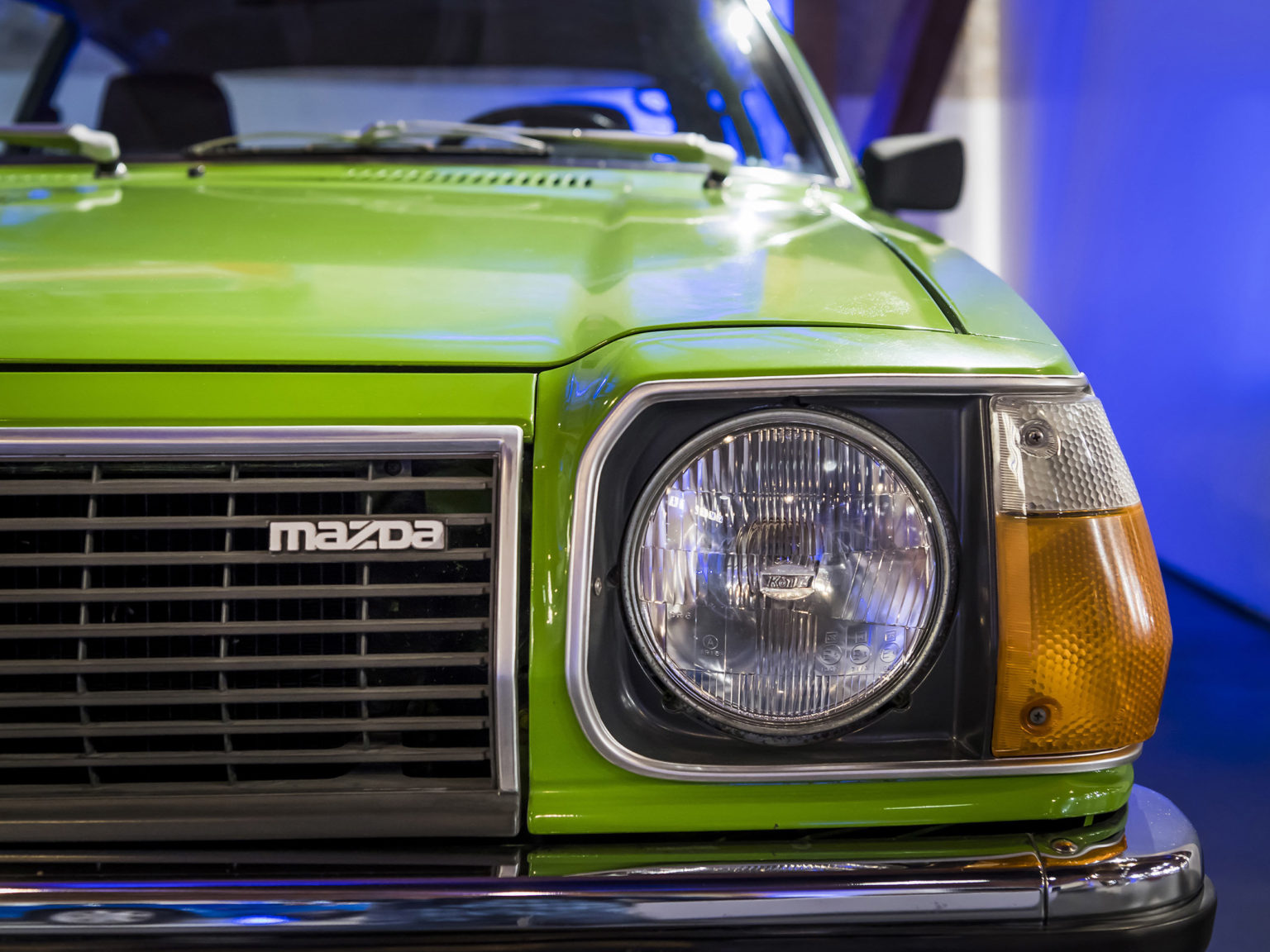The Mazda Familia was introduced in time for the 1964 Summer Olympics in Japan. There were five different models of that first-ten Familia but it wouldn’t be until the third generation of the model in 1977 that Mazda offered the car in a hatchback style. Ever since, Mazda has had a compact hatchback on its menu, culminating in the modern Mazda3.
Styled as the 1977 Mazda 323, the hatchback was a rear-wheel drive family car that gained popularity all over the world. Americans came to know the hatchback as the Mazda GLC (for Great Little Car). Buyers could get it in a three- or five-door hatchback body style. An estate version of the car was introduced 1978.
The Mazda GLC debuted in 1977.Photo courtesy of Mazda North American Operations
Mazda sold the ’77 in the U.S. with a 52-horsepower 1,272cc gasoline-powered engine under its hood. In 1978, a 1,415cc gasoline engine replaced the smaller power plant and produced 65 horsepower.
1979 Mazda GLC Commercial
www.youtube.com
For the 1980 model year, Mazda restyled the model giving it front-wheel drive. Its headlights went from round to square, integrating with the grille in a style that matched the Mazda 626/Capella, and a five-speed manual gearbox was introduced.
Mazda’s U.S. marketing campaign for the next few years featured the tagline, “Just one look – that’s all it took,” and relied heavily on touting its fuel efficiency and low price tag.
Despite the advertising efforts, the GLC’s time in the continental U.S. was very limited. Its new generation, which featured a twin-barrel 1.5-liter engine that produced 68 horsepower, was only sold through 1985. In that generation, the three-door body style was sold in the contiguous states while the five-door variant made its way only to Hawaii and Puerto Rico.
With the GLC now bearing 323 badging, the car was available only as a sedan or hatchback in its third-generation, starting in 1985. The next-gen model was sold as a 323 in the U.S. in hatchback format while the sedan version became the Mazda Protegé.
While Mazda continued to make a hatchback version of the car for other parts of the world, by 1994, they had called time on the model style in the U.S. Still, the Protogé sedan stuck around.
The model had design hallmarks of its time, shown here as a 1978 model.Photo courtesy of Mazda North American Operations
In 1998, a five-door version of the Protogé made its way to U.S. dealer lots as the Protegé5. It was the hatchback America had been missing. The model got a platform update in 1999 making it bigger than before, then, in 2001 a facelift. The Protegé5 was powered by a 130-horsepower 2.0-liter engine and had a fresh interior.
Enter: the Mazda3. In 2003, the first-generation Mazda3 made its debut as a compact car, replacing the Protegé as Mazda’s compact offering. It was marketed as the Mazdaspeed3 in the U.S. The Mazdaspeed3 name had been used on the last version of the Protogé in Japan so the Mazda3 was called the Axela there.
The Mazdaspeed3 was sold in sedan and hatchback variants, and two engine options: a 148-horsepower 2.0-liter and 160-horsepower 2.3-liter. High-performance models worse Mazda3 MPS badging and used a turbocharged version of the 2.3-liter engine to generate 268 horsepower.
Between 2010 and 2015, the Mazda3 reached its sales peak in the U.S. Last year, only half as many models were sold in the U.S. just four years earlier.
The Mazda3 has been redesigned from the top down for the 2020 model year.
Photo courtesy of Mazda North American Operations
The Mazda3 was completely redesigned for the 2020 model year. It now is powered by a 2.5-liter four-cylinder engine that generates 186 horsepower. It is one of the few cars that comes with an available manual transmission (a six-speed). It continues to be a front-wheel drive model with all-wheel drive available. Reviewers note that its back seat and trunk are smaller than what you’d traditionally expect from a vehicle of the Mazda3’s size.








